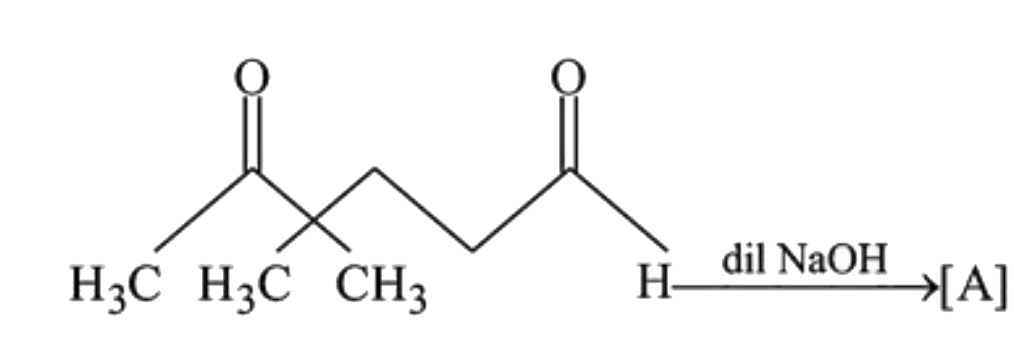In the manufacture of sodium carbonate, following reactions are involved:
(A)Δ−−→(B)+CO2
(B)+H2O→(C)+NH4Cl→(D)+H2O−−−−→ESolution
(E)+CO2→(F)
(F)+NaCl→(G)Heat−−→Na2CO3+CO2+H2O
(D) is a gas which is soluble in H2O
(A) is
Ca(HCO3)2
CaCO3
CaC2
NaHCO3
The correct Answer is:B
To solve the question regarding the manufacture of sodium carbonate and to identify compound (A), we can follow these steps:
1. Identify the Initial Reaction:
The process of manufacturing sodium carbonate involves a series of chemical reactions. The first reaction given is:
(A)Δ→(B)+CO2
Here, we need to determine what (A) is.
2. Recognize the Process:
The manufacturing of sodium carbonate typically uses the Solvay process, which starts with the heating of calcium carbonate (CaCO3). When heated, calcium carbonate decomposes to form calcium oxide (CaO) and carbon dioxide (CO2):
CaCO3Δ→CaO+CO2
Thus, we can conclude that (A) is calcium carbonate (CaCO3).
3. Identify (B):
From the reaction, we see that (B) is calcium oxide (CaO), which is produced when (A) is heated.
4. Next Reaction:
The next reaction involves (B) reacting with water:
(B)+H2O→(C)
Calcium oxide reacts with water to form calcium hydroxide (Ca(OH)2):
CaO+H2O→Ca(OH)2
Therefore, (C) is calcium hydroxide.
5. Reaction with Ammonium Chloride:
The next step involves (C) reacting with ammonium chloride (NH4Cl):
(C)+NH4Cl→(D)
Calcium hydroxide reacts with ammonium chloride to produce ammonia (NH3) gas, which is (D), and calcium chloride (CaCl2):
Ca(OH)2+2NH4Cl→2NH3+CaCl2+2H2O
6. Formation of (E):
The ammonia gas (D) dissolves in water to form ammonium hydroxide (NH4OH), which is (E):
NH3+H2O→NH4OH
7. Reaction with Carbon Dioxide:
The next reaction involves (E) reacting with carbon dioxide:
(E)+CO2→(F)
Ammonium hydroxide reacts with carbon dioxide to form ammonium bicarbonate (NH4HCO3), which is (F).
8. Final Reaction with Sodium Chloride:
Finally, (F) reacts with sodium chloride (NaCl):
(F)+NaCl→(G)
This reaction produces sodium bicarbonate (NaHCO3), which is (G), along with ammonium chloride.
9. Heating Sodium Bicarbonate:
When sodium bicarbonate is heated, it decomposes to form sodium carbonate (Na2CO3), carbon dioxide, and water:
2NaHCO3Δ→Na2CO3+CO2+H2O
Conclusion:
From the above steps, we conclude that (A) is calcium carbonate (CaCO3).
The process of manufacturing sodium carbonate involves a series of chemical reactions. The first reaction given is:
(A)Δ→(B)+CO2
Here, we need to determine what (A) is.
The manufacturing of sodium carbonate typically uses the Solvay process, which starts with the heating of calcium carbonate (CaCO3). When heated, calcium carbonate decomposes to form calcium oxide (CaO) and carbon dioxide (CO2):
CaCO3Δ→CaO+CO2
Thus, we can conclude that (A) is calcium carbonate (CaCO3).
From the reaction, we see that (B) is calcium oxide (CaO), which is produced when (A) is heated.
The next reaction involves (B) reacting with water:
(B)+H2O→(C)
Calcium oxide reacts with water to form calcium hydroxide (Ca(OH)2):
CaO+H2O→Ca(OH)2
Therefore, (C) is calcium hydroxide.
The next step involves (C) reacting with ammonium chloride (NH4Cl):
(C)+NH4Cl→(D)
Calcium hydroxide reacts with ammonium chloride to produce ammonia (NH3) gas, which is (D), and calcium chloride (CaCl2):
Ca(OH)2+2NH4Cl→2NH3+CaCl2+2H2O
The ammonia gas (D) dissolves in water to form ammonium hydroxide (NH4OH), which is (E):
NH3+H2O→NH4OH
The next reaction involves (E) reacting with carbon dioxide:
(E)+CO2→(F)
Ammonium hydroxide reacts with carbon dioxide to form ammonium bicarbonate (NH4HCO3), which is (F).
Finally, (F) reacts with sodium chloride (NaCl):
(F)+NaCl→(G)
This reaction produces sodium bicarbonate (NaHCO3), which is (G), along with ammonium chloride.
When sodium bicarbonate is heated, it decomposes to form sodium carbonate (Na2CO3), carbon dioxide, and water:
2NaHCO3Δ→Na2CO3+CO2+H2O
From the above steps, we conclude that (A) is calcium carbonate (CaCO3).
Topper's Solved these Questions
- S-BLOCK GROUP 1 - ALKALI METALSBOOK - CENGAGE CHEMISTRY ENGLISHCHAPTER - S-BLOCK GROUP 1 - ALKALI METALSEXERCISE - Exercises Multiple Correct
34 Videos
- S-BLOCK GROUP 1 - ALKALI METALSBOOK - CENGAGE CHEMISTRY ENGLISHCHAPTER - S-BLOCK GROUP 1 - ALKALI METALSEXERCISE - Exercises Single Correct
100 Videos
- S-BLOCK GROUP 1 - ALKALI METALSBOOK - CENGAGE CHEMISTRY ENGLISHCHAPTER - S-BLOCK GROUP 1 - ALKALI METALSEXERCISE - Ex 4.1 (Objective)
17 Videos
- REDOX REACTIONSBOOK - CENGAGE CHEMISTRY ENGLISHCHAPTER - REDOX REACTIONSEXERCISE - Archives (Integers)
1 Videos
- S-BLOCK GROUP 2 - ALKALINE EARTH METALSBOOK - CENGAGE CHEMISTRY ENGLISHCHAPTER - S-BLOCK GROUP 2 - ALKALINE EARTH METALSEXERCISE - Ex 5.1 Objective
2 Videos
Similar Questions
In the manufacture of sodium carbonate, following reactions are involved:
(A)Δ−−→(B)+CO2
(B)+H2O→(C)+NH4Cl→(D)+H2O−−−−→ESolution
(E)+CO2→(F)
(F)+NaCl→(G)Heat−−→Na2CO3+CO2+H2O
(D) is a gas which is soluble in H2O
(E ) and (F) are
View SolutionIn the manufacture of sodium carbonate, following reactions are involved:
(A)Δ−−→(B)+CO2
(B)+H2O→(C)+NH4Cl→(D)+H2O−−−−→ESolution
(E)+CO2→(F)
(F)+NaCl→(G)Heat−−→Na2CO3+CO2+H2O
(D) is a gas which is soluble in H2O
The name of the process is
View SolutionAΔ−−→B (oxide) +CO2
B+H2O→C
C+CO2→A (milky)
C+NH4CIΔ−−→D (gas)
D+H2O+CO2→E
E+NaCI→F
FΔ−−→Na2CO3+CO2+H2O
D,E and F are:
View SolutionAΔ−−→B (oxide) +CO2
B+H2O→C
C+CO2→A (milky)
C+NH4CIΔ−−→D (gas)
D+H2O+CO2→E
E+NaCI→F
FΔ−−→Na2CO3+CO2+H2O
B and C are:
View SolutionAΔ−−→B (oxide) +CO2
B+H2O→C
C+CO2→A (milky)
C+NH4CIΔ−−→D (gas)
D+H2O+CO2→E
E+NaCI→F
FΔ−−→Na2CO3+CO2+H2O
A is:
View SolutionAΔ−−→B (oxide) +CO2
B+H2O→C
C+CO2→A (milky)
C+NH4CIΔ−−→D (gas)
D+H2O+CO2→E
E+NaCI→F
FΔ−−→Na2CO3+CO2+H2O
Name of the process is:
View Solution Hdil NaOH−−−−→[A]H2O+−−−→Δ[B]
Hdil NaOH−−−−→[A]H2O+−−−→Δ[B]
View SolutionComplete the following reactions
(a)XeF4+H2O→
(b )XeF6+H2→
(c)XeF6+H2O→
(d)XeF6+NH3→
View SolutionIdentify (A) to (G) in the following scheme and name the process.
CaCO3Δ−−→(A)+(B)gas,(A)+H2O→(C)
(C)+B→CaCO3+H2O(D)+(C)Δ−−→(E)gas
(E)+H2O+(B)→(F),NaCI+(F)→(G)+(D)
(G)Δ−−→Na3CO3+H2O+(B)
View SolutionSiCl4H2O−−→(A)Heat−−→(B)Na2CO3−−−−→Heat(C),
The compound (C ) is
View Solution
